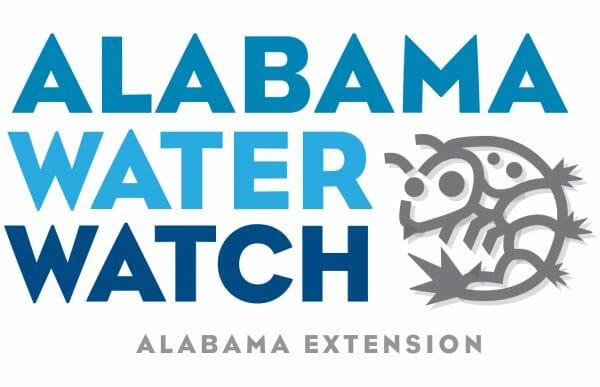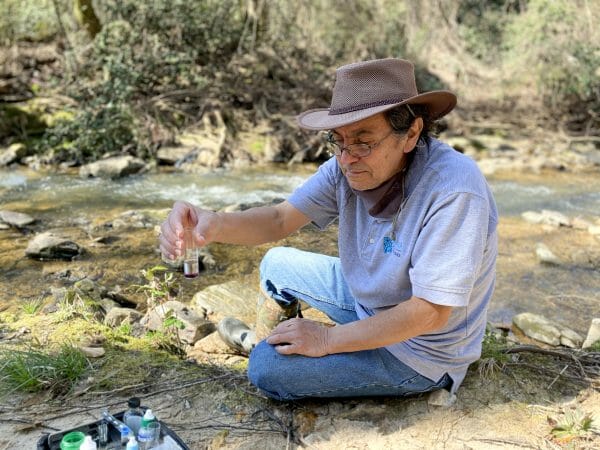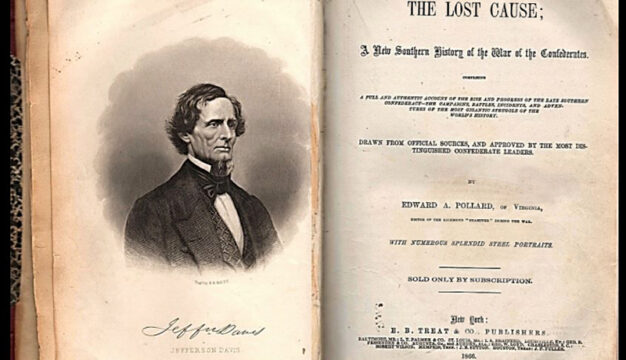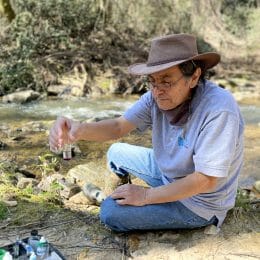Alabama Water Watch
Alabama Water Watch (AWW) is a water-quality monitoring program, based at Auburn University, that began in 1992 as a coalition of groups working to protect and restore lakes and streams throughout the state. The mission of AWW is to improve both water quality and water policy through citizen monitoring and action. AWW achieves this mission by educating people on water issues in Alabama and the world, training citizens to use standardized equipment and techniques to gather credible water information, and enabling citizen monitors to effect change by using their water-monitoring data for environmental education, restoration and protection, and involvement in watershed stewardship.
The AWW program at Auburn University began in the Department of Fisheries and Allied Aquacultures with funding from the Alabama Department of Environmental Management (ADEM) and the U.S. Environmental Protection Agency (EPA) in an effort to reduce polluted runoff from both urban and rural sources. This type of pollution is difficult to regulate and is best controlled by educating citizens about changing their attitudes and actions. The nonprofit Alabama Water Watch Association (AWWA) was formed shortly after AWW to support programming and citizen monitors. The AWWA is made up of a volunteer board of directors who work closely with the AWW program staff.
In 2012, AWW became part of the Auburn University Water Resources Center, which is supported by the Alabama Cooperative Extension System, the Alabama Agricultural Experiment Station at Auburn University, and other external funding sources. The AWW team consists of a program director, data coordinator, volunteer monitor coordinator, communications and marketing coordinator, and administrative assistant who all have additional roles and responsibilities with the Water Resources Center. AWW supports volunteers by providing technical support and tools, such as the online Water Data portal. AWW has a well-established volunteer training program that enables the organization to meet the high demand for training opportunities throughout the state.
Prospective volunteers attend one or more free AWW trainings conducted throughout the year statewide. Workshops are coordinated from the AWW program office so that certifications can be tracked and to assist new monitors in their water testing and data submission efforts. During the workshops, participants learn how to test water for various chemical, physical, and biological characteristics, such as dissolved oxygen, turbidity, pH, and bacteria (e.g., E. coli) concentrations. Monitoring techniques follow EPA-approved quality-assurance plans.
AWW aims to have a monitor assigned to every stream, river, lake, and bay in Alabama, which has more than 132,000 miles of streams and rivers and 490,000 acres of lakes. Thus far, more than 360 citizen groups representing homeowner/boat-owner organizations, environmental organizations, and schools in all major river basins of Alabama have participated in AWW. Thousands of volunteers have been certified as monitors and have submitted tens of thousands of data records from 2,600 sites on 970 bodies of water. The information is posted on the AWW website and is accessible to monitors, regulatory agencies, educators, and the general public.
AWW also has a youth-focused partnership program, 4-H Alabama Water Watch, that prepares educators to teach students about water monitoring and stewardship. The curriculum includes Exploring Our Living Streams: Stream Biomonitoring and Water Chemistry Monitoring, Exploring Pathogens in Our Waters, and An Educators Guide to Alabama’s Rivers, which is a companion guide to the book, Alabama Rivers: A Celebration & Challenge by Bill Deutsch, founder and first program director of AWW. All curriculum is correlated with the state education courses of study. AWW is an affiliate of the Alabama Math, Science and Technology Initiative (AMSTI) in the Alabama State Department of Education. Hundreds of teachers, informal educators, 4-H agents, and community volunteers have been certified to use AWW's 4-H curriculum and to monitor water with their students. To date, more than 40,000 young people in Alabama have participated in 4-H AWW through classroom, club, special events, and camp programming.
AWW and its volunteer programs have had significant influence on water policy, such as the upgrade of Wolf Bay and the Magnolia River to Outstanding Alabama Water status and the designation of Lake Martin as Alabama’s Treasured Lake, which provides these bodies of water with greater protection. Volunteer monitors have also found numerous sources of bacterial contamination and have used their data to convince municipalities, businesses, and other organizations to remedy the problems. AWW water data is regularly used by ADEM to establish lists of impaired streams and to develop pollution-control recommendations.
AWW has coordinated other watershed-related research and outreach projects, including the Saugahatchee Watershed Management Plan, Tallapoosa Watershed Project, and Rock Creek Watershed Management Plan, and has contributed to many others. These projects have involved volunteer monitors, researchers, municipal officials, and others to address water quality, quantity, and policy issues.
AWW is a national leader in volunteer water monitoring and has been the model for other U.S.-based programs, including Sno-King Global Water Watch in Seattle, Washington, and Mississippi Water Stewards, based out of Mississippi State University. On a global scale, AWW has influenced and supported other programs via the Auburn University-based Global Water Watch Program and nonprofit organization Global Water Watch, Inc. Countries in which the global probram has worked or currently has programming include the Philippines, Brazil, Mexico, Peru, Chile, and Argentina.








